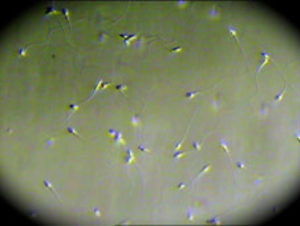Considering all the antibiotics that the typical sinusitis sufferer takes over the years, reading this article was depressing. One wonders, can the gut microbiome (community of microbes) recover from many rounds of antibiotics and how long does it take? Please note: CD is Crohn's disease, UC is ulcerative colitis, and IBD is inflammatory bowel disease. Dysbiosis means that the community of microbes (microbiome) is out-of-whack. From Medscape:
Antibiotics Associated With Increased Risk of New-onset Crohn's Disease but not Ulcerative Colitis
The objective of this study was to perform a meta-analysis investigating antibiotic exposure as a risk factor for developing inflammatory bowel disease (IBD).A literature search using Medline, Embase, and Cochrane databases was performed to identify studies providing data on the association between antibiotic use and newly diagnosed IBD.
Conclusions: Exposure to antibiotics appears to increase the odds of being newly diagnosed with CD but not UC. This risk is most marked in children diagnosed with CD.
--------------------------------------------------------------------------
Environmental factors have a key role in the pathogenesis of inflammatory bowel disease (IBD)...Furthermore, the incidence of IBD has been increasing worldwide over time. Developing countries have seen an increase in IBD incidence as they have Westernized.
Emerging evidence suggests that certain medications are associated with an increased risk of new-onset IBD. In particular, antibiotics have been linked to the development of both Crohn's disease (CD) and ulcerative colitis (UC).Growing research suggests that the microbiome and its interaction with the mucosal immune system are important in the pathogenesis of IBD.Antibiotics can cause alterations to the microbiome that may potentially contribute to the dysbiosis and dysregulated immune response seen in IBD.
Previous studies have investigated the association of antibiotic exposure with newly diagnosed IBD in both adult and pediatric populations. CD has been more consistently associated with antibiotic use, with some studies demonstrating an increased risk of CD but not UC. It also appears that patients who receive more frequent courses of antibiotics have a higher likelihood of developing IBD.
The results of this meta-analysis suggest that exposure to antibiotics increases the risk of new-onset IBD. When stratifying by type of IBD, antibiotic exposure was associated with an increased risk of developing CD but not UC. We found that the magnitude of risk of new CD is greater for children than for adults. All classes of antibiotics studied, with the exception of penicillins, were associated with new diagnoses of IBD. Interestingly, the types of antibiotics showing the strongest association were fluoroquinolones and metronidazole.
Although it is impossible to draw causal links on the basis of these data, there are some possible implications and explanations for our findings. First, our findings may support the importance of disruptions in the microbiome in the pathogenesis of IBD. The link between antibiotic exposure and new IBD seems biologically plausible. It is known that the microbiome likely has an important role in the pathogenesis of IBD. Studies have shown a decrease in the diversity and stability of both mucosa-associated bacteria and fecal bacteria in patients with CD and UC.For example, the largest cohort microbiome study to date recently found that newly diagnosed CD patients have increased Enterobacteriaceae,Pasteurellaceae, Veillonellaceae, and Fusobacteriaceae, and decreased Erysipelotrichales, Bacteroidales, and Clostridiales.
Antibiotics have been shown to alter the composition of the human gut microbiota by decreasing taxonomic richness and diversity....Although the microbiome may recover to its initial state within days to weeks after antibiotic treatment, some studies have shown a longer-term impact of antibiotics on specific microbial populations that can persist for months to years.
It is unclear as to why antibiotic exposure was associated with new-onset CD and not UC. Studies have suggested a difference in the microbiota between CD and UC patients....Our finding that pediatric populations appear to have an increased association of antibiotic use with new-onset CD compared with adults may reflect the less stable nature of the microbiome earlier in life. During the first 3 years of life, the microbiome appears to undergo marked changes and significant maturation toward an adult-like composition with greater interpersonal variation. It is possible that antibiotics may therefore have a greater impact during childhood when the gut microbiota composition is still developing.

 Another popular view bites the dust.
Another popular view bites the dust. Sperm under microscope. Credit: Fertility Associates Ltd. NZ
Sperm under microscope. Credit: Fertility Associates Ltd. NZ Are probiotic bacteria the reason?
Are probiotic bacteria the reason?